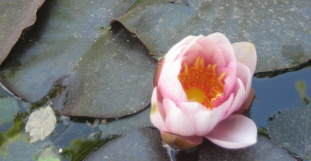

Since I've been posting to clevelandpoetics a series of haiku (one a week) under the heading "52 Cleveland Haiku," I suppose it is incumbent upon me to answer the question of what, exactly, I think a haiku is, and is not.
A haiku is a short nature poem written in Japanese, written as seventeen syllables and incorporating a kireji, building on the form of the hokku as adapted by such haiku masters as Basho and Issa. That's fine, but of course I'm not writing in Japanese (my Japanese is just good enough to say " two beers, please," and " excuse me, where is the bathroom?"). So, what is a haiku in English?.
-- at this point haiku scholars are already jumping up to shout at me for saying that a haiku in Japanese has seventeen syllables. A Japanese poet couldn't even tell you how many syllables a poem has; "syllable" isn't a Japanese word. Rather, a haiku is a poem with seventeen "on," or Japanese sound-units; an on is similar, but not exactly the same as, a syllable. For the most part, though, this distinction doesn't make much of a difference; with a few exceptions, seventeen Japanese "on" is usually also seventeen syllables. But here is a critical distinction: Japanese on are always very short syllables. The Japanese language doesn't have long or complicated syllables; a word like "strengths"-- one syllable in English!-- just can't be transliterated into Japanese. As a result, a poem of seventeen syllables in English says a lot more than a poem of seventeen on in Japanese (in fact, scholars say that twelve syllables in English conveys about the same content as seventeen on in Japanese).
Classically, when haiku were adapted into an English form, they were formalized as a poem of three lines, respectively five, seven, and five syllables, for a total of seventeen syllables. This matches the pattern of a Japanese haiku, to the extent that it's even possible to do so, except that the Japanese poem is typically written in a single line, not three. But it results in a poem that, although short by English poetry standards, is still a lot longer than the elegant minimalism of the Japanese.
Add to this the fact that the Japanese haiku is not merely a syllabic form, but is a nature poem-- in fact, not merely a nature poem, but explicitly a seasonal poem (the "kigo" mentioned early is a season word). Traditionally, a haiku is "in the moment"-- present tense-- without metaphor, but simply observation; and also by tradition is not an imagined scene, but a direct experience by the poet.
Japanese has other forms for poems that aren't haiku-- senryu, for example, are also seventeen syllable poems, but poems of observation of human foibles. (Actually, I'm very fond of senryu, and a lot of the stuff in English that's tagged "haiku" are actually senryu.).
Haiku also have that "kireji" that I mentioned, a "cutting word" that cuts a haiku into two parts of five and twelve syllables (on). English doesn't have explicit "cutting words," but a traditional haiku in English will have a distinct pause, often made explicit with punctuation (e.g., a dash or a colon) at the end of either the first line (assuming it's written in three lines), or the second, thus cutting it into two pieces of either five and twelve, or twelve and five, syllables.
So, what about haiku in English, anyway? Because English syllables say so much more than Japanese on, an English poem of 5-7-5 syllables tends to be rather fat compared to a Japanese haiku. A haiku ought to be an observation that is stripped down to its essentials, but in English, the poet sometimes even has to add syllables to pad out the count up to seventeen. The Haiku Society of America now defines a haiku simply as "a short poem that uses imagistic language to convey the essence of an experience of nature or the season intuitively linked to the human condition" -- note the fact that they have given up on the 5-7-5 form, and don't even keep the tradition of writing in three lines (nor, for that matter, the requirement for a seasonal reference.).
OK. Well, even in Japan, modern haiku poets often have given up the explicit seasonal reference-- and don't always write in the seventeen on, either. But, to be fair, they have a few centuries head start on us, and must be getting pretty tired of what can said in seventeen on using the list of allowed kigo and kireji words.
The 5-7-5 form, in English, has become almost a joke-- much of what passes for haiku in English is little more than zappai, "miscellaneous" or joke poems. It's very freeing to write a haiku and focus on stripping the words down to just the essentials, instead of obsessing over syllable count, trying to nail an image clearly and distinctly.
But, on the other hand, when a form is abandoned, something is missing. Despite the difference between English and Japanese, in Japanese a haiku is not just any short series of words, but a series of words in a particular pattern. So, sorry, HSA, but in giving up on 5-7-5, yes, something is gained, but also something essential is lost.
So, all in all, I have gone back to writing haiku into 5-7-5 form, although I have given up on being strict about it. And keeping a pause cutting the poem in two pieces. And, when it's explicitly a haiku (and not, perhaps, a senryu), a seasonal reference. --But the title "52 Cleveland Haiku" is figurative: although many of these (maybe even most) are haiku, I've sprinkled in some senryu, and, yes, probably even a few zappai.
Don't like it? Well, feel free write your own.
Page by Geoffrey A. Landis, 2011